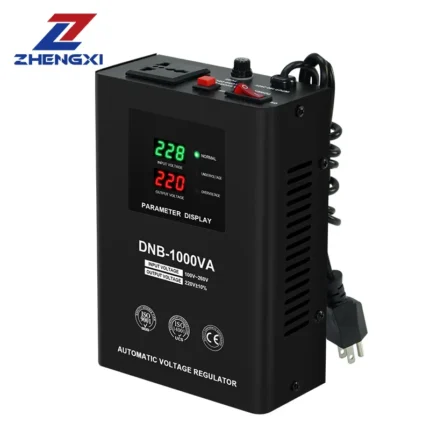What Is an Automatic Voltage Regulator? Your Power Protection Guide
An automatic voltage regulator (AVR), also called an automatic voltage stabilizer, is a device that maintains a steady voltage supply to electrical equipment, regardless of input voltage fluctuations. It acts as a “guardian” for your appliances, correcting overvoltage, undervoltage, and surges in real time.
DNB AVR 220v 230v 240v Single-Phase Relay Type Ac Voltage Stabilizer For Home
How Does It Work?
Using transformers, relays, or servo motors, the AVR continuously monitors voltage. If the input deviates from the safe range (e.g., 220V±10%), it adjusts the output automatically. Advanced models include microprocessors for precision control.
Key Benefits
Equipment Protection: Shields motors, electronics, and machinery from damage.
Energy Savings: Reduces power waste caused by unstable voltage.
Seamless Operation: Prevents downtime in industries, hospitals, and homes.
Where Is It Used?
Industrial: CNC machines, production lines.
Residential: ACs, refrigerators, TVs.
Commercial: Servers, medical devices, elevators.
FAQ
Q1: Is an automatic voltage stabilizer the same as a regulator?
A: Yes—the terms are often interchangeable, though "regulator" may imply broader voltage correction capabilities.
Q2: Can it work with a UPS/inverter?
A: Absolutely! Pairing an automatic voltage regulator with a UPS ensures stable backup power.
Q3: What size AVR do I need for a 3-ton AC?
A: A 10-12 kVA stabilizer is ideal. Match the regulator’s capacity to your appliance’s power rating.
Q4: Why choose servo-controlled AVRs?
A: They offer ±1% voltage accuracy, ideal for sensitive labs or data centers.
Q5: How long do AVRs last?
A: 8-15 years with annual maintenance (cleaning contacts, testing circuits).
Pro Tip: For areas with erratic power, an automatic voltage stabilizer isn’t optional—it’s essential insurance against costly repairs and downtime!


